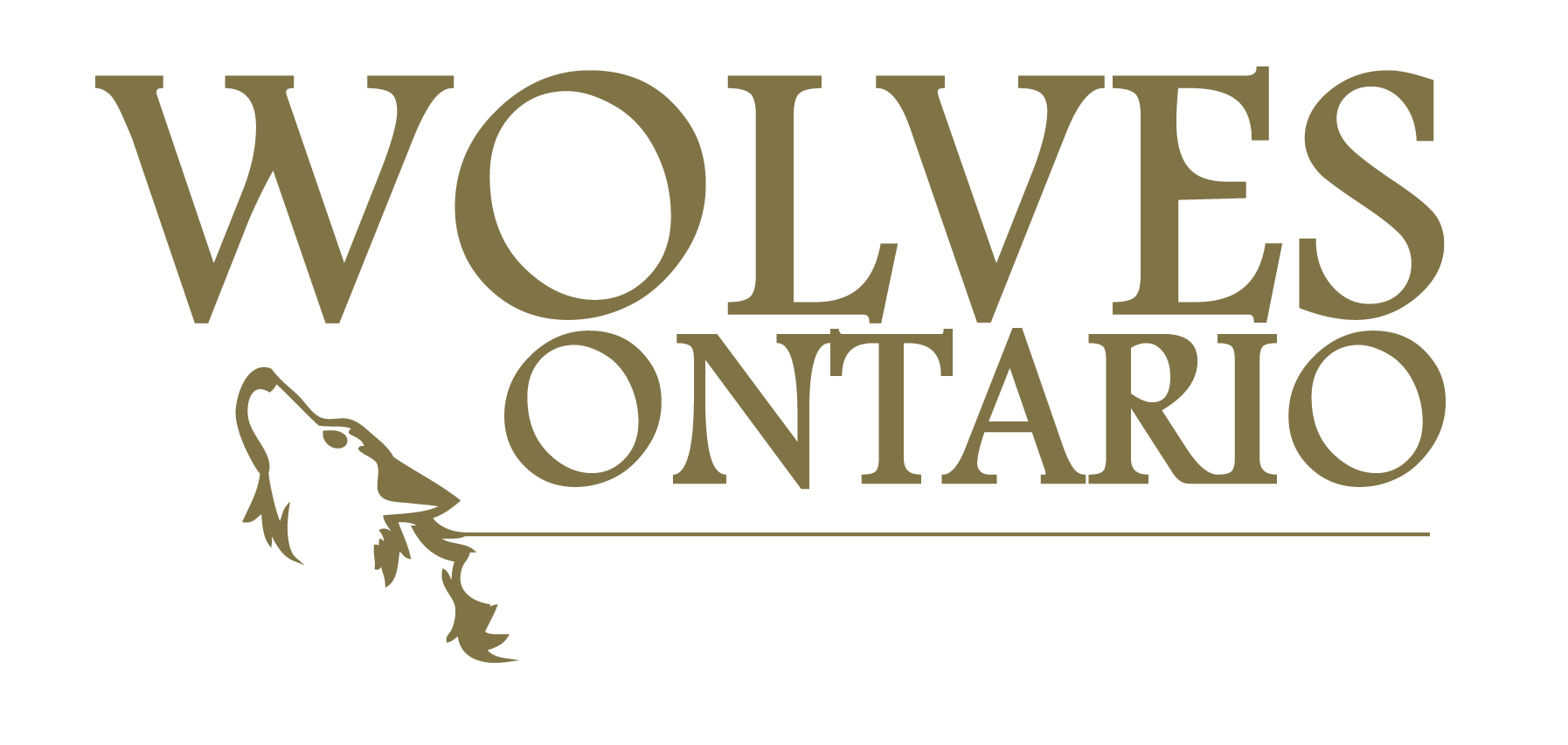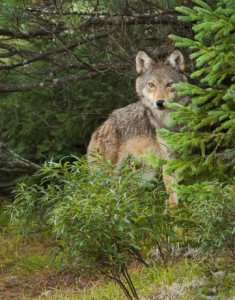On August 12th, the Ministry of Natural Resources and Forestry proposed an amendment to the regulations that govern trapping in Ontario. Ministry biologists and a trapper conducted an experimental capture of coyotes using new devices called “relaxing cable restraints”. The results showed that of 20 animals trapped, 17 were coyotes. The three others were a domestic dog caught around the neck, and a white tailed deer and raccoon both caught around the torso; they were released by the trapper, apparently unharmed.
Injuries to coyotes were assessed after each animal was shot in the head by the trapper and submitted to a veterinary pathologist. Six coyotes were submitted skinned, the trapper having sold their pelt for profit.
Injuries were deemed acceptable according to the Agreement on the International Humane Trapping Standards but were gruesome: including one coyote who suffered several injuries having tried to chew himself out of the trap and many instances of lacerations on the neck. Three traps were chewed through entirely and one was dragged away, likely having captured a large animal such as a bear or an adult deer.
Earthroots does not believe that these results show that relaxing cable restraints are selective. Instead, they appear to pose a serious threat to non-target animals.
Despite the Ministry’s reasoning that these traps are more selective than killing snares, the point remains that the Ontario government condones killing coyotes and other wildlife deemed as a threat or nuisance, instead of educating the public to prevent conflict in the first place. Not only is harming and killing wildlife ethically bankrupt, science shows that it does not reduce and can actually exacerbate livestock depredation.
Furthermore, legalizing this trapping device would give trappers false confidence in trap selectivity for coyotes. Given that eastern wolves and coyotes are physically indistinguishable in Ontario, the unintentional trapping and killing of eastern wolves is possible where their ranges overlap. The government knowingly endangers eastern wolves, a species at risk of extinction, by supporting this trapping device and the use of trapping in general as a response to perceived threats from wildlife.
In collaboration with several other conservation organizations, Earthroots authored a comment in opposition to this proposal addressing the fundamental flaws in the arguments for trapping and killing wildlife in Ontario.
You can read our public comment below. Sign up as a Wolf Defender and we’ll let you know about government proposals like these and provide information about how to exercise your right to comment on legislative changes. Use your voice to speak up for wildlife!
September 28, 2023
Wildlife Section
PUBLIC INPUT COORDINATOR
Ministry of Natural Resources and Forestry
Policy Division
Species Conservation Policy Branch
Wildlife Section
300 Water Street
Peterborough Ontario
K9J 8M5
Phone: (705) 755-1940
Fax: (705) 755-2901
Subject: EBR Registry Number: 012-4735: Amendments to Ontario Regulation 667/98 (Trapping) made under Fish and Wildlife Conservation Act to regulate the use of relaxing cable restraints for trapping in Ontario
Dear Sir/Madam,
Thank you for this opportunity to comment on the proposed changes to trapping regulations in Ontario. We acknowledge the Ontario Ministry of Natural Resources and Forestry’s (MNRF) attempt to mitigate the effects of trapping on non-target species by testing the relaxed cable restraint device (RCR).
We agree with Knowlton et al. (1999) that “because various segments of society attach different values to coyotes, resolution of depredations should use management programs that integrate the social, legal, economic, and biological aspects of the animals and the problem. Preferred solutions should involve procedures that solve problems as effectively, efficiently, and economically as possible in the least intrusive and most benign ways.”
However, we are concerned that the proposed changes made under the Fish and Wildlife Conservation Act (FWCA) do not provide such a solution. We outline these concerns below and provide recommendations to address the underlying reason for the proposed regulation changes.
-
There is little to no evidence in the scientific literature that supports the use of lethal control/removal of canids as an effective, long-term tool for reducing livestock depredation.
Trappers and farmers permitted to use trapping devices to capture coyotes and wolves in defense of property do not often have access to the scientific literature that addresses predator control. They often lack the best available information about mitigating livestock depredation. We suggest that MNRF focus on equipping farmers and trappers with this information in order to help reduce conflict between predators and farmers.
Several studies on predator management discuss results that are perhaps counter-intuitive to farmers and trappers:
- Harper et al. (2008) and Wielgus & Peebles (2014) found no evidence that removal of wolves decreased the rate of depredation the following year, in Minnesota and Idaho, Wyoming and Montana, respectively, unless the population was harvested at an unsustainable rate. In fact, both studies found that livestock depredation increased the following year. Wallach et al. (2009) found that lethal control of dingoes in Australia did not necessarily reduce abundance of the predator and led to socially fractured populations. They add that socially unstable predator populations are often correlated with higher livestock losses, a result echoed by Allen and Gonzalez (1997, dingoes in Australia), Conner et al. (1998; coyotes in the USA) and Peebles et al. (2013, cougars in the USA). Ongoing harvesting of canids to reduce their population to near-zero in order to reduce livestock depredation risk is both ecologically and socially unacceptable. Coyotes and wolves provide useful ecosystem services to farmers such as controlling rodent and deer populations and are inherently valuable and deserving of protection from systematic eradication.
- Selective removal of problem/breeding coyotes is both difficult and ecologically complex (Conner et al. 2007) and appears to reduce depredation for only a very short period of time (see review in Jaeger 2004).
- There exists a wide variety of methods to prevent livestock depredation by wolves and coyotes including but not limited to: removing deadstock quickly and reducing other open attractants, confining or concentrating livestock during periods of high vulnerability (e.g. calving/lambing), using livestock guardian animals (e.g. dogs, llamas, donkeys etc.), maintaining a human presence in areas of the property where animals are pastured using deterrents such as fladry, turbofladry and sound/light deterrents. When used correctly and adaptively, these tools can be combined on a case-by-case basis to effectively reduce livestock depredation and replace lethal predator management altogether. For example, Harper et al. (2008) analyzed lethal management by trapping in particular, and suggested that daily visits simulating trapping may be a more cost effective tool than actually trapping wolves.
Recommendations:
- Educate farmers in wolf/coyote range about non-lethal predator management to complement the existing livestock compensation program.
- Transition from the reactionary trapping and the compensation program administered by the Livestock, Poultry and Honeybee Protection Act to the prevention of livestock depredation by providing financial incentives to farmers who adopt non-lethal predator management approaches.
-
Coyote trapping in many areas of southern and central Ontario continues to threaten the survival and dispersal of eastern wolves (Canis lycaon), a species at risk.
Eastern wolves were recently assessed by the Committee on the Status of Endangered Wildlife in Canada (COSEWIC), where they were deemed a unique species (see Rutledge et al. 2015) and listed as Threatened. Following the recent appointment of a new chair of the Committee on the Status of Species at Risk in Ontario (COSSARO), eastern wolves will be re-assessed at the provincial level by 2016. We hope that a recovery strategy for the species will be released in a timely fashion in conjunction with studies, past and present, (e.g. those conducted by Rutledge and Benson in collaboration with Dr. Brent Patterson) of the MNRF that detail the various threats to eastern wolves. Conclusions from these studies include:
- Anthropogenic mortality is a threat to eastern wolves. Eastern wolf survival is lower than that of other canis types outside of the protected area in and around Algonquin Provincial Park (APP).
- Hybridization is a threat to eastern wolves. Hybridization with coyotes is higher in areas where canids are harvested.
- Eastern wolves are not likely to recover outside of APP to their historical range without protection from harvest.
- Eastern wolves and the coyotes that inhabit Ontario are physically indistinguishable – without genetic testing, you cannot differentiate between a pure eastern wolf and a coyote or a hybrid.
- Eastern wolves and other canis types have overlapping body sizes.
- MNRF is uncertain about the current and historical range of the eastern wolf in Ontario.
It follows that eastern wolves are very likely caught in traps laid for coyotes. Furthermore, since a trapper or farmer is unable to differentiate between a coyote and an eastern wolf, they may be killing eastern wolves unintentionally. The relaxed cable restraint (RCR) will not protect eastern wolves despite MNRF’s intent to reduce non-target species mortality and endangers this species at risk. The federal and provincial status of the eastern wolf therefore precludes the use of RCR or any other coyote trapping device in suspected, known and historic eastern wolf range while the species is threatened with extinction.
Recommendations:
- Immediately prohibit all wolf/coyote trapping in known and suspected eastern wolf range.
- Incorporate direction for non-lethal, preventative predator management of both wolves and coyotes for farmers into the Strategy for Wolf Conservation in Ontario and the FWCA.
We strongly urge you to adopt our recommendations and ensure that famers are protected from the economic costs of maintaining healthy, resilient and socially stable canid predator populations in Ontario.
Signatories,
Hannah Barron, Director of Wildlife Conservation
Earthroots
Amber Ellis, Executive Director
Earthroots
Lesley Sampson, Founding Executive Director
Coyote Watch Canada
Lia Laskaris, Director
Animal Alliance of Canada
Camille Labchuck, Director of Legal Advocacy
Animal Justice Canada Legislative Fund
Liz White, Leader
Animal Alliance Environment Voters Party of Canada
Barry MacKay, Canadian Representative,
Born Free USA
Ainslie Willock, Director,
Canadians for Bears
Liz White/Donna DuBreuil, Spokespersons
Ontario Wildlife Coalition
Donna DuBreuil, President
Ottawa-Carleton Wildlife Centre
References:
Allen L and Gonzales T.1998. Baiting reduces dingo numbers, changes age structure yet often increases calf losses. Australian Vertebrate Pest Control Conference 11:421–428.
Conner MM, Jaeger MM, Weller TJ and McCullough DR. 1998. Effect of coyote removal on sheep depredation in northern California. Journal of Wildlife Management 62:690–699.
Conner MM, MR Ebinger and FF Knowlton. 2008. Evaluating coyote management strategies using a spatially explicit, individual-based, socially structured population model. Ecological Modelling 219: 234-247.
Harper E, Williams PH, Mech LD and Wiesberg S. 2008. Effectiveness of lethal, directed wolf-depredation control in Minnesota. The Journal of Wildlife Management 72:778-783.
Jeager MM. 2004. Selective targeting of Alpha coyotes to stop sheep depredation. Sheep and Goat Research Journal, Paper 9.
Knowlton, FF, EM Gese and MM Jaeger. 1998. Coyote depredation control: An interface between biology and management. Journal of Range Management, 52, 398-412.
Peebles KA, Wielgus RB, Maletzke BT and Swanson ME (2013) Effects of remedial sport hunting on cougar complaints and livestock depredations. PLoS ONE.
Rutledge LY, Devillard S, Boone JQ, Hohenlohe PA and White BN. 2015 RAD sequencing and genomic simulations resolve hybrid origins within North American Canis. Biology Letters. 11: 20150303.
Wallach AD, Ritchie EG, Read J and O’Neill AJ. 2009. More than Mere Numbers: The Impact of Lethal Control on the Social Stability of a Top-Order Predator. PLoS ONE 24.
Wielgus RB and Peebles KA. 2014. Effects of wolf mortality on livestock depredation. PLoS ONE 9(12): e113505.

